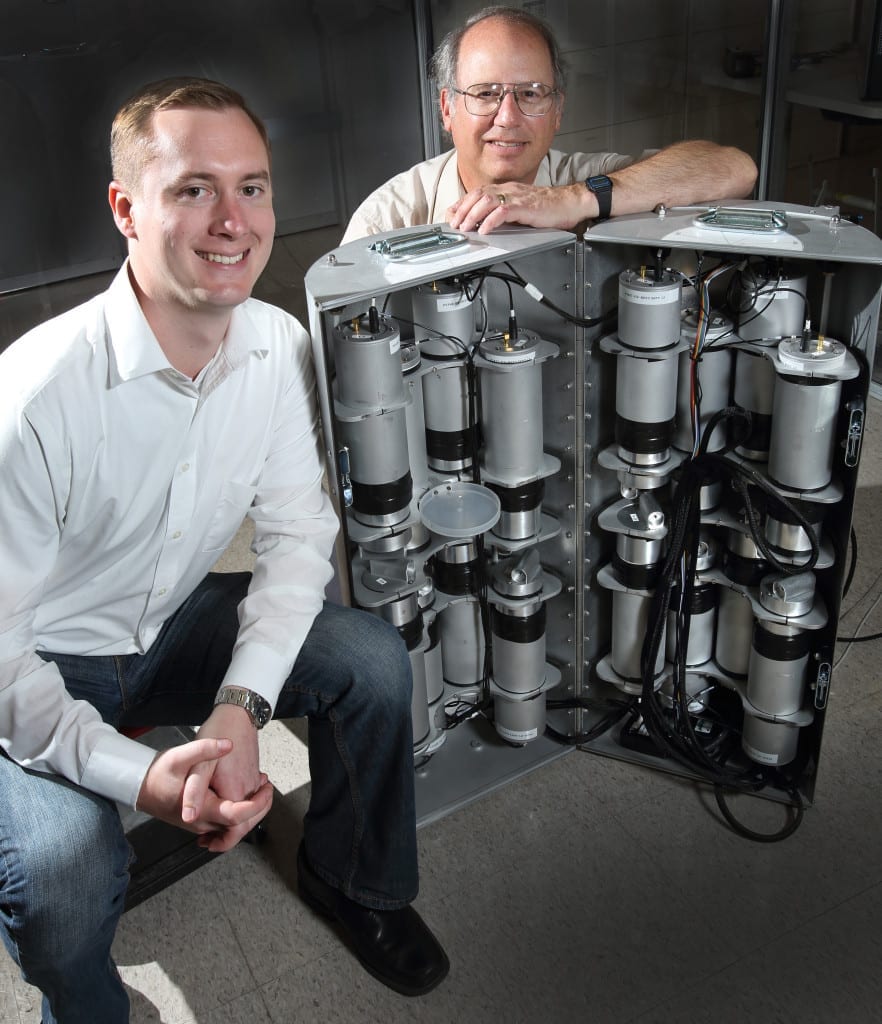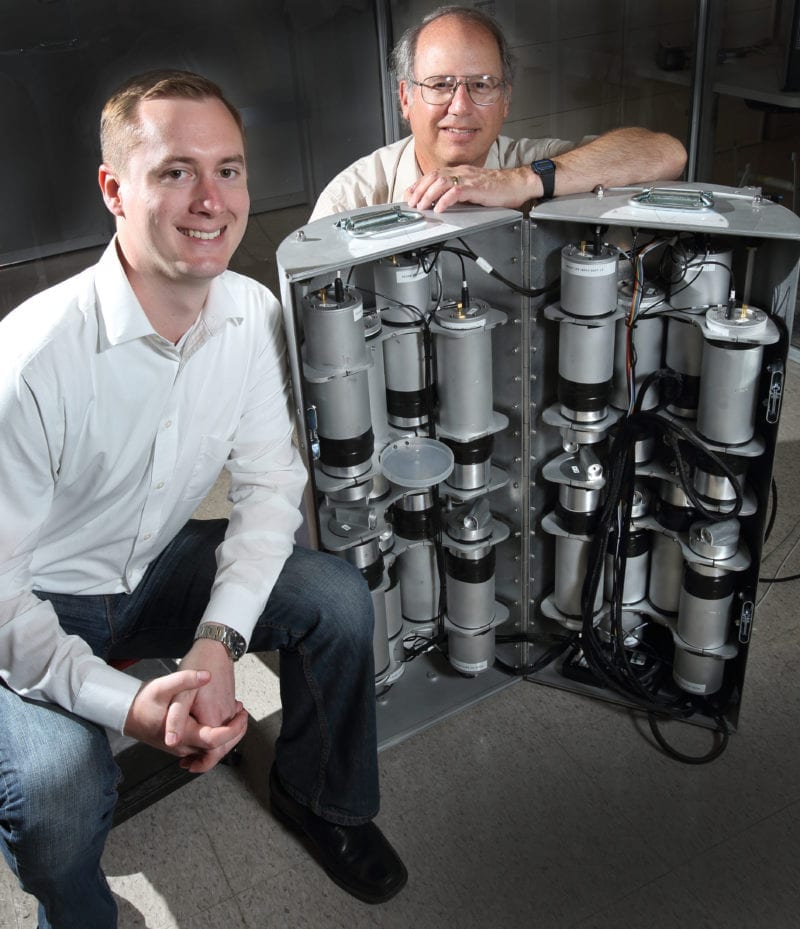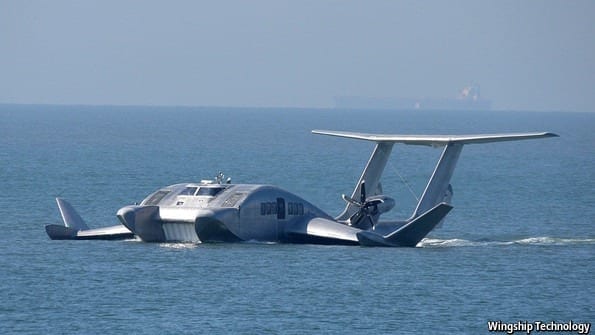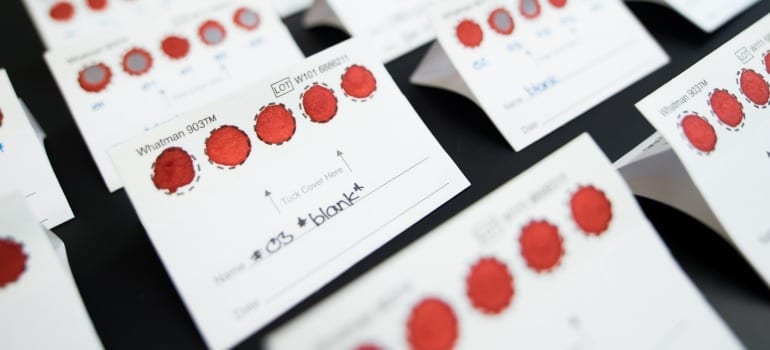
Mobile imager of fast neutrons spots radiation source at a distance and through shielding
nuclear device has been hidden in a high-rise building in a major metropolitan area. Emergency responders have intelligence that narrows down the location to a single city block, but it isn’t safe to search door-to-door. Can they identify the exact location of the device quickly without the culprits realizing a search is on?
The answer is a definite yes. Sandia National Laboratories’ mobile imager of neutrons for emergency responders (MINER) system did just that at an emergency response exercise in downtown Chicago earlier this year. The exercise used a sealed laboratory radiation source that mimics the radioactive signature of more nefarious material.
“The system performed exactly as we expected,” said Sandia physicist John Goldsmith. “With an unshielded source, we pinpointed the location within 30 minutes. With more shielding, it took a couple of hours.”
MINER is a portable version of the neutron scatter camera, which detects fast neutrons that emanate from special nuclear material to pinpoint the source, even at significant distances and through shielding. Funding for the development came from the Defense Nuclear Nonproliferation Office of Research and Development within the Department of Energy’s National Nuclear Security Administration.
The original neutron scatter camera was quite large, standing about 5 feet tall and requiring a power source. MINER is about half that size at 3 feet tall and 90 pounds.
MINER consists of 16 proton-rich liquid scintillator cells arranged inside a large cylinder. The scatter aspect comes into play as neutrons travel through the scintillator cells and bounce off protons like billiard balls. Those interactions among the different detector cells enable the instrument to determine the direction of the radioactive source that emitted the neutrons.
Distinguishes between threatening and non-threatening radiation sources
As a neutron scatter camera, MINER has several advantages over other types of detectors, including the ability to discriminate the device signature from background radiation and to measure the spectrum of neutrons emitted by it.
“Simple neutron counters are unable to distinguish a threat source from an elevated neutron background. However, an imager such as MINER can do this by observing a ‘hot spot’ against the neutron background,” Goldsmith said. “In addition, MINER’s ability to measure the neutron spectrum enables it to distinguish plutonium, a threat source, from AmBe [americium-beryllium, the most common commercial source of neutrons], which is not a threat source. Among imaging approaches, this capability is unique to MINER.”
MINER can be set up and taken down in 10 minutes, and most importantly, operates on battery power. “Since MINER doesn’t need to be tethered to a power source, it gives a lot of options to emergency responders,” said Goldsmith.
The Chicago field exercise focused on neutron detectors, so MINER was one of three neutron imagers tested along with several neutron counters. It wasn’t a competition, explained Goldsmith, but a test of each detector’s capabilities.
“There are tradeoffs with every kind of detector. If you are trying to pinpoint a source, a backpack detector might be the fastest, but there are scenarios in which walking around isn’t possible,” he said.
One of MINER’s strengths is its ability to provide omni-directional imaging. “Other imaging detectors have a very fixed field of view, so they look at a specific spot,” said Sandia physicist Mark Gerling. “MINER images all the way around and up and down, or a full 4? steradians. We imaged part of one side of an entire high-rise building at once and narrowed the search to a specific room. It’s extremely effective in this situation.”
The Latest on: Portable nuclear device detector
[google_news title=”” keyword=”portable nuclear device detector” num_posts=”10″ blurb_length=”0″ show_thumb=”left”]
via Google News
The Latest on: Portable nuclear device detector
- Missing or Stolen?on May 14, 2024 at 7:27 am
“The ITDB encompasses a range of activities, from the smuggling and sale of nuclear material to unauthorized disposal and the discovery of lost radioactive sources,” says Scott Purvis, Head of the ...
- Most Valuable Metals That We Couldn’t Live Withouton May 9, 2024 at 12:00 am
They power our mobility and energy generation, which is why there are hundreds of commercial applications for metals, with more uses being discovered each year.While you are probably familiar with ...
- Optomed Oyj, AEYE Health say portable device to detect eye issues gets FDA nodon May 1, 2024 at 3:28 am
A portable device that detects eye conditions that can cause sight loss in people with conditions such as diabetes has received clearance from the U.S. health regulator, its developers Optomed Oyj and ...
- Q&A: Cosmic rays, space weather and larger questions about the universeon April 21, 2024 at 5:00 pm
The detector cost is manageable, and the devices are both portable and easy to operate ... My main research project, as a high-energy nuclear physicist, is to collide gold nuclei near the speed ...
- Ravenshaw University researchers invent portable device for instant cancer detectionon March 24, 2024 at 10:53 pm
BHUBANESWAR: A group of researchers from Ravenshaw University has invented a unique diagnostic device that could revolutionise cancer detection in the country. The portable device can detect ...
- Rosatom presents portable drone detectoron March 11, 2024 at 6:08 pm
Rosatom nuclear agency for the first time presented Druzhinnik portable drone detector at Robotics and ... industrial objects and buildings. The device weighs 1.8 kg and detects objects at a ...
- Nuclear Security Detection Architectureon February 3, 2023 at 8:18 am
The nuclear security detection architecture (NSDA) is an integrated set of nuclear security systems and measures based on an appropriate legal and regulatory framework. The objective of the NSDA is to ...
- Cold War Documents Show Familiar Worries Over Nuclear Weaponson April 19, 2022 at 10:15 am
Edgar Hoover shows the F.B.I. discussing limiting the size of the diplomatic mail pouch or directing diplomats to enter the country through ports with radiation detectors. The handwritten note is ...
- Radiation Detectors Informationon February 8, 2018 at 10:54 am
Image Credit: Texas A&M University / Nuclear Safeguards Education Semiconductor ... designed to sit on a tabletop or attach to a process stream. Portable detectors are designed as handheld devices for ...
- Portable Gas Detectoron June 6, 2017 at 8:33 am
Durable, high-performance, 4-gas detector runs for 24 months straight without running out of battery. This compliance-based, low-maintenance, portable gas detector, the Multi Gas Clip Simple ...
via Bing News












